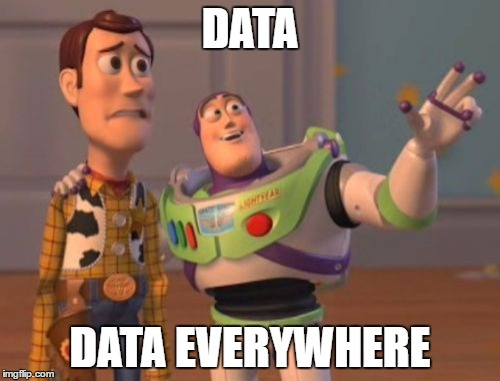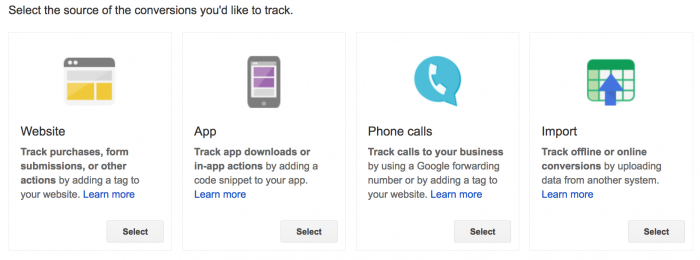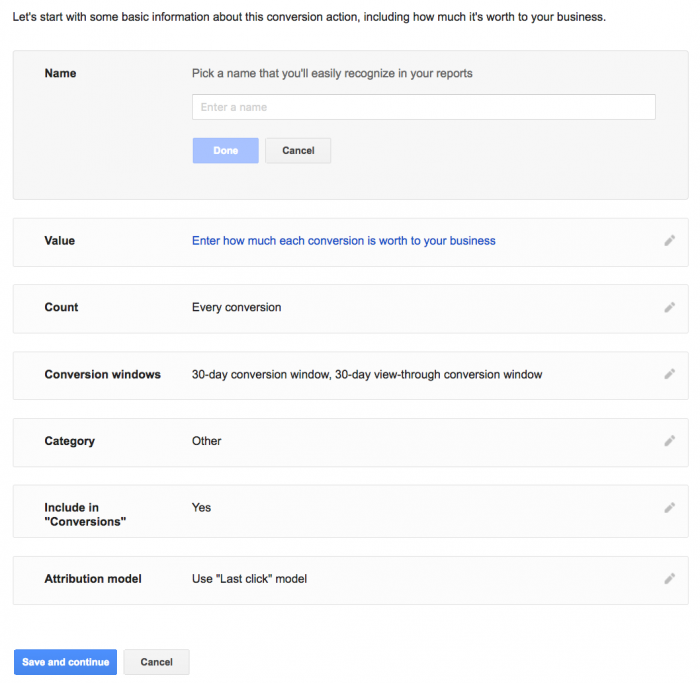Do metrics overwhelm or confuse you?
You’re not alone.
Tracking results is something that many business owners and even experienced online marketers find intimidating. But these efforts are absolutely critical to the success of your AdWords campaigns.
Understanding key metrics such as click through rates and conversions helps you make better business decisions. If a campaign is performing well, you can invest more to increase your ROI. Likewise, if a campaign isn’t converting then it doesn’t make sense to continue pouring money into it.
Tracking key metrics in AdWords means the following for your business:
- Increased conversions: By tracking metrics such as click through rates, you can see which ads perform well. Increasing this number means more clicks to your landing pages and potentially more conversions as a result.
- Higher rankings: Bidding more is not the only way to increase ad positions. Google also considers the overall relevance of your campaign which is based on Quality Score. Increasing this value not only results in higher ad positions but also reduced cost per click.
Both of which mean a higher return for your business. It also translates to a huge competitive advantage as tracking and measuring metrics can uncover key insights about your campaigns.
With AdWords, it’s possible to track and measure a whole spectrum of metrics. But which ones should you track to get the most out of your PPC advertising budget? Here we look at how to measure the most important key performance indicators (KPIs) in Google AdWords.
KPIs to Measure Traffic
Just building a website isn’t enough.
You need targeted traffic to generate sales.
Organic rankings in the search results can be achieved through SEO. But it can easily take weeks or even months of effort to rank.
This is what makes AdWords such an attractive platform. You could create a campaign and start driving targeted traffic to your landing pages right away. If your main goal is to drive traffic, then these are KPIs you’ll want to track and measure:
- Clicks: Clicks are simply the number of clicks that a campaign has generated and is the industry standard for measuring traffic. Clicks can help you better understand how your campaigns, ad groups, or ads are performing. If a campaign isn’t generating clicks, it could be down to a number of factors. But tracking this KPI is the first step towards improving the performance of your campaign.
- Impressions: Impressions indicate the number of times that your ads appear. This metric is particularly useful as it tells you how much search demand there is for certain keywords. Target keywords with a high number of impressions to drive more traffic to your pages.
- Click through rates (CTR): CTR is a useful metric as it shows how people are responding to your ads. This number is calculated by taking the number of clicks an ad receives and then dividing it by impressions. A high CTR means that more visitors are clicking through to your landing pages and is a good indicator of how your campaigns are performing overall.
Each of these KPIs are enabled by default:
Clicks and click through rates are key metrics to regularly keep an eye on as they can be used to gauge how your ads are performing. For example, a low CTR is a good indication that people are not finding your ads useful or relevant.
Ways to improve CTR and drive more clicks to your pages include:
- Writing compelling ad copy
- Bidding on relevant keywords
- Split testing different versions of an ad
- Utilising ad extensions
KPIs to Measure Conversions
Traffic is great.
But getting conversions is ultimately what matters.
A conversion is any action that you want prospects to take while on your landing pages. Some examples include purchasing a product, filling out a lead generation form, signing up for a newsletter, and calling a phone number.
Here are the KPIs you’ll want to track and measure for conversions:
- Conversions: This is simply the number of times that your ad has resulted in a desired action such as a sale. With this metric, you’ll be able to see which campaigns are generating results.
- Cost per conversion: Also known as Cost Per Acquisition (CPA), this is calculated by taking total ad cost and dividing by conversions. Essentially it measures how much it costs to attain a conversion.
- Conversion rate: Conversion rate is measured by taking total number of conversions and dividing by total clicks to your ads. Clear and effective ad copy as well as optimised landing pages can help boost conversion rates.
First, you’ll need to setup conversion tracking in AdWords to measure the effectiveness of your ads. This involves adding a tracking tag to your site. Then when someone clicks through and performs a desired action (e.g. purchasing a product), that action is recorded as a conversion.
This information is incredibly valuable as it means being able to identify which campaigns are driving sales right down to the keywords themselves. Then you can allocate resources accordingly.
To setup conversion tracking, click on Tools at the top and select Conversions from the dropdown list. Then click on the red +Conversion button. On the next page, you’ll be asked to select the source of conversions you want to track:
Select the first option to track conversions from your website. Next you will need to provide additional information about the conversion action:
Be sure to enter in an appropriate name so you can easily refer to it later. Then assign a conversion value which is simply how much a conversion is worth to your business. On the next page, you’ll be given a tracking tag to add to your website. Once you finish adding it, you’ll be able to start tracking conversions in your campaigns.
For your campaigns, you can add columns to view conversion data and even cost per conversion (CPC). Go into a campaign, then click on Columns and click Modify Columns. From Metrics, select Conversions and you’ll see the following metrics:
Simply click the arrow to add these metrics to your columns and click Apply at the bottom of the page. Now for that campaign, you’ll be able to see those values:
These KPIs tell you how much value a campaign provides your business.
Quality Score
Quality Score is a rating that Google assigns based on the quality and relevance of your campaign. Click through rates have a significant impact on Quality Scores as a high CTR is a strong indication that people find your ads useful and relevant.
Improving your Quality Score means:
- Higher ad positions
- Lower costs
Both of which lead to higher impression share and greater ROI.
Under the Keywords tab, click on Modify Columns under Columns. Then click Attributes and click the arrow next to Quality Score to add it to a column:
Then click Apply. You will now see Quality Score as a new column. Alternatively, hovering over the keyword’s eligibility status in the status column will show you your Quality Score and even tips on improving it. The better your score, the better return you can expect.
Final Thoughts
KPIs reveal valuable insight about your AdWords campaigns.
The metrics as discussed here are not only valuable to measure traffic to your landing pages, but also conversions that your efforts are producing. This information can help you make better marketing decisions and generate a higher return on your investment.
Find a Home-Based Business to Start-Up >>> Hundreds of Business Listings.























































